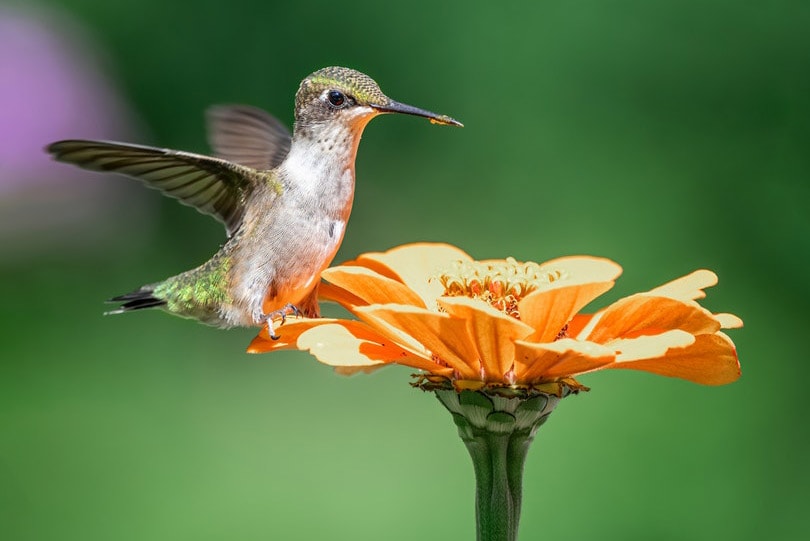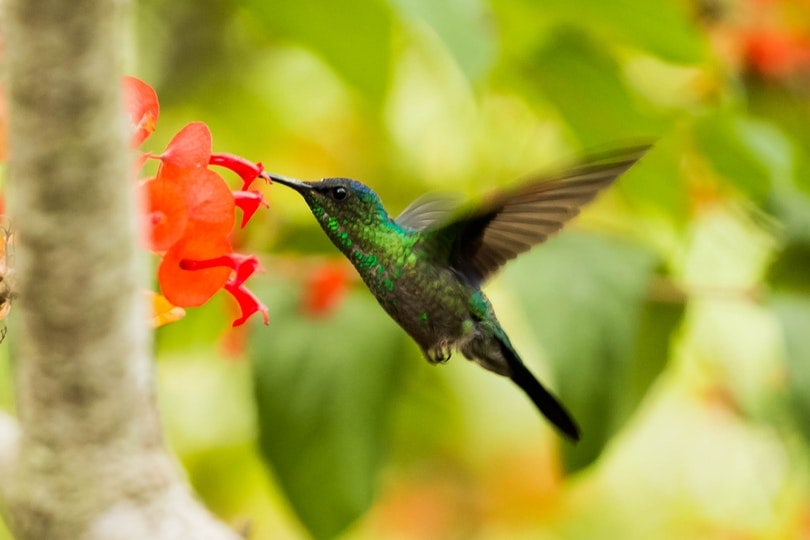Are Birds Pollinators? The Surprising Answer!
Last Updated on

The phrase “the birds and the bees” refers to an essential function that both organisms fulfill in Nature. They are facilitators that make reproduction happen for their respective recipients. While you may not think that birds serve this purpose, many plants depend on them and have even evolved to ensure that they continue to fulfill this critical role. So, yes, birds are pollinators.

Purpose of Pollination
Plants are stationary and rely on external forces to help with pollination. The purpose of pollination is to bring the male’s pollen to the female’s stigma. Nature has adapted to ensure that reproduction happens with its approximately 435,000 terrestrial species. The result is the same no matter how it happens—the plant lives long enough to survive and pass on its genes.

Monoecious vs Dioecious Plants
One of the ways that plants have adapted to environmental pressures is by having both male and female reproductive structures on one plant or separate ones. That distinction designates them as either monoecious or dioecious plants. Several factors come into play regarding which path evolution takes. It can include things such as species density or the availability of other pollinators.
Some traits are also a matter of selective breeding. For example, some grape species are dioecious, but wine grape varieties are monoecious, which is beneficial to winemakers for vine density. That can, in turn, affect wine quality, making it a vital factor driving this selection pressure.
Sometimes, it’s desirable for a plant not to be monoecious. If you’re planting apple trees for their blossoms and not the fruit, you may find it beneficial to have only saplings of one sex on your property to avoid waste.
Examples of Bird Pollinators
Many bird pollinators have a sweet tooth, which makes sense considering that’s one of the attractants plants use to survive. One classic example of a bird pollinator is the hummingbird.
Contrary to popular belief, birds can smell. The sweet scent of the blooms is a sure-fire attractant. In return, the plants have a pollinator to ensure their genetic survival.

Ways Plants Attract Birds
Plants have evolved to attract their preferred pollinators. They achieve this by confusing the competition that puts birds at the forefront. This is similar to how the Scarlet Monkeyflower (Mimulus cardinalis) elicits an avoidance response in bees.
- Flower shapes
- Nectar production
- Diurnal flower opening
- Bright colors
It’s fascinating to observe these correlations. It’s one thing when an organism evolves in a way that benefits it alone; it’s another matter altogether when it sways the evolution of another species. That’s the case with plants that depend on birds as pollinators.
Another effective way that plants attract birds is with their fruit. Birds eat them and then release the seeds into the environment through their droppings to continue the life cycles. Fruits are often brightly colored to get the attention of their potential pollinators. In addition,
fruits are usually bitter or foul-tasting until the seeds are physiologically mature. This is one way to ensure that birds and other wildlife eat them (instead of humans) and keep the cycle going.

Conclusion
We usually think of bees as the consummate pollinator. However, other organisms also take the reins, whether intentional or accidental. The essential takeaway is that birds do pollinate our plants, and life continues because we have various organisms to make it happen. These actions are the ultimate examples of symbiosis. Plants benefit from pollination, and the pollinators get a tasty meal. It’s a botanical win-win.
Featured Image Credit: Skyler Ewing, Pexels
About the Author Chris Dinesen Rogers
Chris has been writing since 2009 on a variety of topics. Her motto with all of her writing is “science-based writing nurtured by education and critical thinking.” Chris specializes in science topics and has a special love for health and environmental topics, and animals of all shapes and sizes.
Related Articles:
10 Types of Hummingbirds in Arkansas (With Pictures)
8 Types of Hummingbirds in Nebraska (With Pictures)
5 Types of Hummingbirds in Idaho (With Pictures)
3 Types of Hummingbirds in Mississippi (With Pictures)
8 Types of Hummingbirds in Kansas (With Pictures)
5 Types of Hummingbirds in West Virginia (With Pictures)
5 Types of Hummingbirds in Ohio (With Pictures)
Where Do Nuthatches Nest? Nuthatch Nesting Habits Explained
